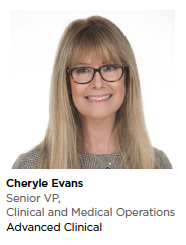 It’s been three years since ICH added the E6 (R2) addendum to its Good Clinical Practice guidelines. The addendum was intended to create harmonization between US and EU clinical research regulations, and to drive adoption of quality risk management methodologies in clinical trial design, conduct, and oversight.
It’s been three years since ICH added the E6 (R2) addendum to its Good Clinical Practice guidelines. The addendum was intended to create harmonization between US and EU clinical research regulations, and to drive adoption of quality risk management methodologies in clinical trial design, conduct, and oversight.
To achieve compliance, sponsors must implement an end-to-end risk-based monitoring approach across all aspects of clinical research that will proactively assess trends, identify gaps, isolate outlier data, and then plan appropriate mitigations to address the issues.
This approach leverages management and aggregation of the data to proactively identify risks, which improves the safety and effectiveness of the clinical oversight process, while making better use of monitoring resources. However, achieving this proactive risk environment requires a significant investment in technology, training, and change management to adapt standard operating procedures (SOPs), which can be a complex, long, and costly endeavor.
Many large pharma organizations and CROs already achieved compliance.
However, smaller and mid-sized biopharma firms (SMBs), where novel and innovative research is occurring, have been slower to make these changes, which could be placing their important research at risk. E6(R2) requires more than just adopting a new data platform — though that is part of the approach. Pharma, biotech, and device manufacturers also have to establish formal oversight steps for vendors to verify adherence to quality risk management steps at every stage of the clinical research lifecycle, and be able to prove to auditors that these steps are being consistently followed.
Many SMBs lack the expertise, infrastructure, SOPs, and resources to make these changes, while others aren’t aware of the extent of changes required, or they begin too late to develop an effective RBM approach. These delays put them at a higher risk of audit findings for inadequate monitoring or lack of proof that risk processes are being followed. For example, auditors may find that risk assessments were not considered with identified actions to be implemented when signals exist, there is inadequate evidence for how the risk was assessed, managed, documented, and, ultimately resolved.
Selecting the Right Partner
Fortunately, SMBs can turn to their CROs for help. An effective CRO partner should be able oversee much of the burden of implementing an E6(R2) by conducting a comprehensive risk assessment and designing and implementing a compliant RBM system for their clients.
However, sponsors have to bring CROs to the table early in the process so that study design can be built around an RBM solution — rather than trying to force fit a solution once the study is in motion.
When selecting a CRO who can deliver an E6(R2) solution, sponsors should look for partners that can demonstrate the following:
E6(R2) Expertise. The vendor’s client team should have a deep understanding of the E6(R2) addendum and be able to provide guidance and SOPs on how to comply from day one. They should provide support in conducting protocol risk assessments during study design, help the sponsors identify gaps in their current risk identification process, and develop quality management plans, including key reporting indicators (KRIs) that can be used to customize the data management solution for the ongoing monitoring needs of each site.
Technology: The vendor should be readily available to provide a centralized RBM data management platform that can capture all risk monitoring data in a single location and be customized to provide alerts and reminders when data is missing or needed, or when outliers are discovered. The platform should replace manual reporting processes and provide dashboards that generate real-time insights into the risk environment across all sites.
Training. A good vendor will provide training for all CRAs and relevant site staff on how to use the RBM platform and processes in the trial environment. As Patricia Leuchten, President and CEO of The Avoca Group, stated in this KNECT365 article: “The easy part is creating processes, getting SOPs aligned, insuring there’s a strength of documentation. The hard part is getting individuals to change their behaviors and mindset as it pertains to executing trials through the lens of risk." Culture change is a significant aspect of RBM adoption, so this training is critical for success.
Proof it Works. The vendor should provide case studies and client contacts to demonstrate past successes. These examples should include details on how the transition worked, and what time and cost benefits were delivered. Sponsors can use these case studies to vet vendors, and to convince internal stakeholders of the benefits of adopting an RBM approach.
E6(R2) isn’t going away. If SMBs want to avoid the time, cost, and uncertainty of audit findings related to clinical research oversight they need to move forward with this transition.
Finding a vendor that can provide the necessary technology and expertise can ease the challenge of adoption and ensure monitoring strategies maximize the benefits while meeting compliance requirements.(PV)
Advanced Clinical is a global clinical development organization that provides CRO, FSP, Quality & Validation, and Strategic Resourcing services for biopharmaceutical and medical device organizations. The company’s mission is to deliver a better clinical experience.
For more information, visit advancedclinical.com.
















